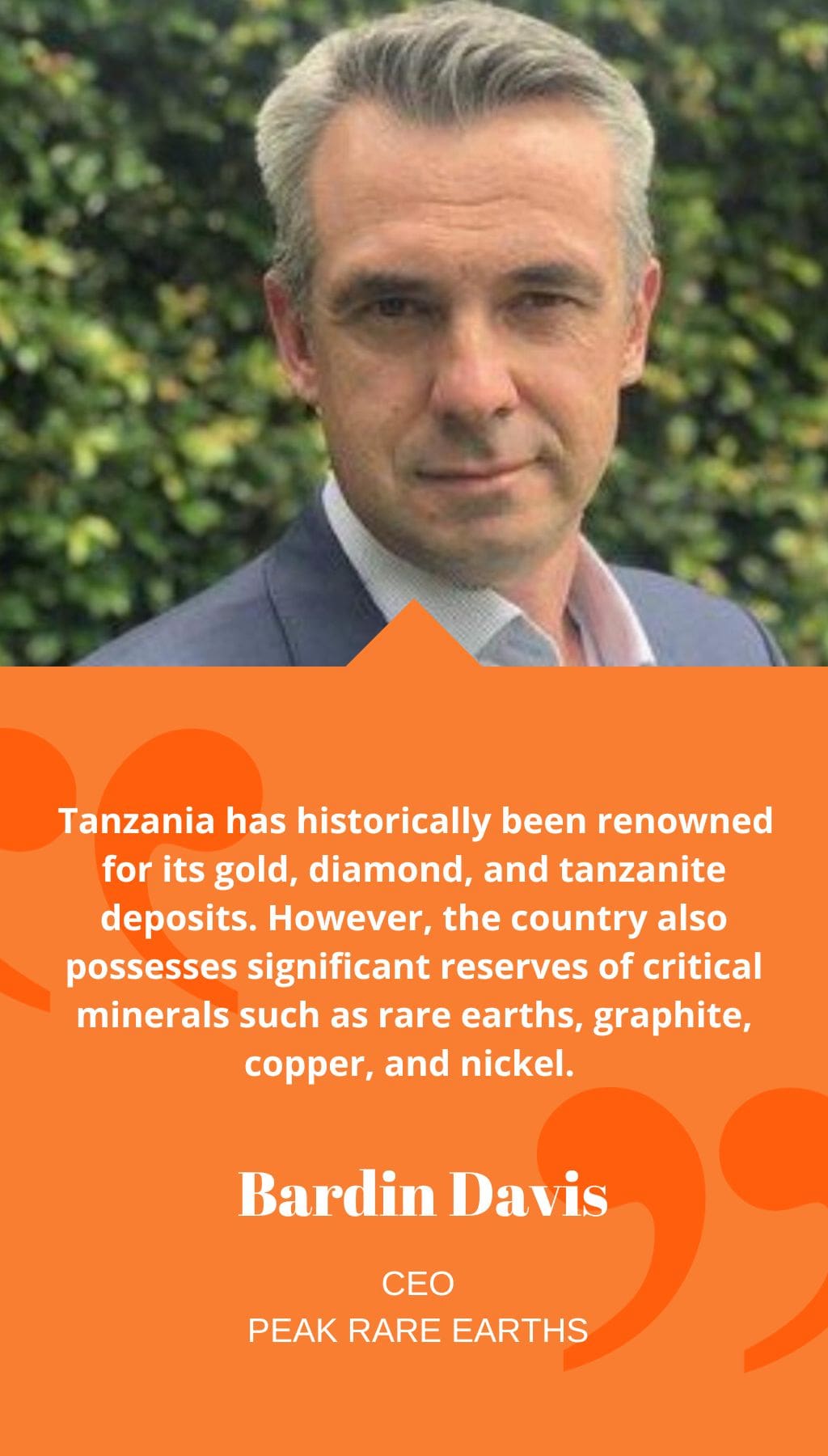
- Tanzania | 16 September 2022

Could you provide us with an introduction to Peak Rare Earths and its focus on global decarbonization?
Peak Rare Earths is a rare earths development company listed on the ASX (Australian Securities Exchange) that is strategically aligned with the global decarbonization theme. Our flagship project, Ngualla, located in Tanzania, is one of the largest and highest-grade undeveloped rare earth projects in the world. It boasts several key differentiating factors, including its high-grade nature, low levels of radionuclides, a 24-year mine life supported by JORC-compliant ore reserves, and significant exploration and development potential. Notably, approximately 92% of the value of Ngualla’s high-grade rare earth concentrate will be derived from contained NdPr (neodymium praseodymium) oxide, crucial for high-strength permanent magnets used in electric vehicles and wind turbines.
Can you comment on the key highlights of your recently updated Bankable Feasibility Study (BFS)?
The recently completed 2022 BFS update for the Ngualla project builds upon the original BFS conducted in early 2017 and confirms its world-class status. Noteworthy outcomes from the study include an anticipated annual production of approximately 3,700 tonnes of NdPr, compelling economic metrics such as a US$1.5 billion net present value (NPV) and a 37% internal rate of return (IRR). We are currently aiming for a final investment decision in May 2023, followed by a two-year construction phase, with first concentrate targeted for mid-2025. The upfront capital cost is estimated at around US$320 million, with 60-70% expected to be covered through debt financing, while the remaining balance will be sourced through a combination of potential co-investment at a project level and equity raising.
What factors influenced the decision to update the Bankable Feasibility Study (BFS)?
The decision to update the BFS was driven by several factors, including the upward movement in rare earth prices, optimization opportunities within the project, and cost fluctuations.
The outlook for rare earths has dramatically changed since the completion of our original BFS in 2017. With an increasing number of countries committing to net-zero carbon emissions and the phase-out of internal combustion engine vehicles, the world is wholeheartedly embracing decarbonization. Prominent global auto brands like Mercedes, BMW, Fiat, Volvo, and Jaguar have set ambitious targets to transition to fully electric vehicles by 2030, while General Motors in North America plans to phase out diesel and petrol cars by 2035. As a result, rare earth prices have experienced significant increases since 2013, and further strengthening is expected as the world continues to decarbonize.
Regarding optimization, the BFS update reflects a 14% capacity expansion, as well as other enhancements such as a shorter and lower-cost project access road, the adoption of a lower-cost flotation collector, and the incorporation of GITSM (Global Industry Standard on Tailings Management) standards for our tailings storage facility.
While there have been some upward movements in capital and operating costs, these have been offset by the improved rare earth prices.
Peak Rare Earths has signed an MoU with Shenghe Resources for NdPr offtake. How does this differ from your original plan, and what are the benefits of this new approach?
Initially, our plan involved developing a mine and concentrator in Tanzania alongside a refinery in the UK. However, after negotiations with the Tanzanian Government, we have agreed to first develop Ngualla as a standalone concentrate project and collaborate with the government to explore downstream processing opportunities. In this context, we have signed a strategic and offtake MoU with Shenghe Resources, our largest shareholder and the largest importer of rare earth concentrate into China. This sequential development approach allows us to reduce upfront capital and technical risks while generating operational cash flows before progressing further downstream. It also enables us to take advantage of the growing surplus in rare earth refining capacity, strong demand for high-grade rare earth concentrate, and favorable payment terms.
Can you provide more insights into the operational environment in Tanzania?
Tanzania has historically been renowned for its gold, diamond, and tanzanite deposits. However, the country also possesses significant reserves of critical minerals such as rare earths, graphite, copper, and nickel. This presents a tremendous opportunity for Tanzania to diversify its mining sector and establish strong ties with the next phase of global industrialization. Under the leadership of President Samia Suluhu Hassan, Tanzania has set a target to increase mining’s contribution to GDP from 3.5% to 10% by 2025. President Hassan has emphasized the importance of foreign investment and has taken clear steps to facilitate foreign direct investment (FDI) and reduce bureaucratic obstacles. Over the past year, multiple framework agreements have been approved in sectors including graphite, mineral sands, diamonds, and liquefied natural gas (LNG), demonstrating Tanzania’s commitment to fostering a conducive operational environment for mining and other industries.














